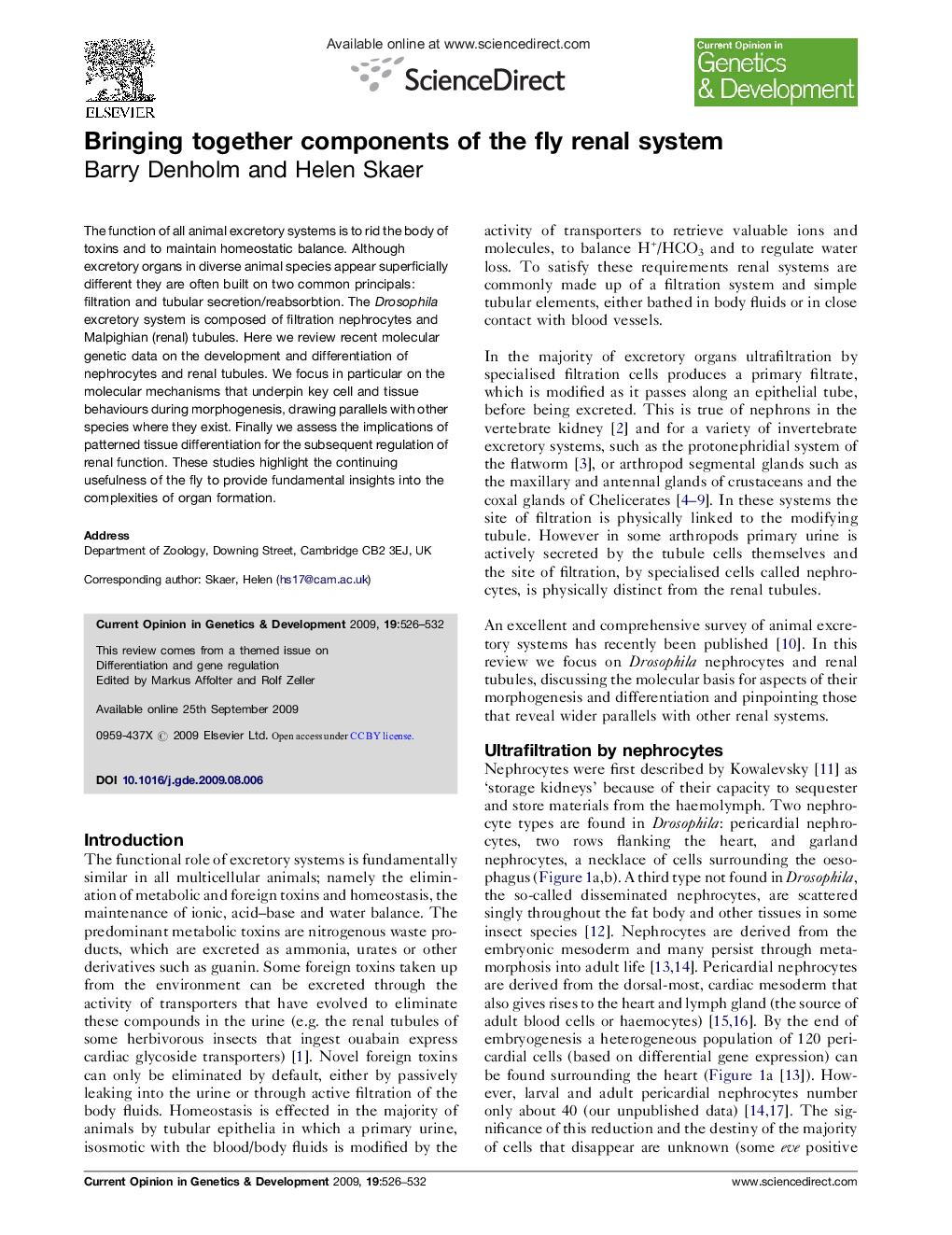| Article ID | Journal | Published Year | Pages | File Type |
|---|---|---|---|---|
| 5893833 | Current Opinion in Genetics & Development | 2009 | 7 Pages |
The function of all animal excretory systems is to rid the body of toxins and to maintain homeostatic balance. Although excretory organs in diverse animal species appear superficially different they are often built on two common principals: filtration and tubular secretion/reabsorbtion. The Drosophila excretory system is composed of filtration nephrocytes and Malpighian (renal) tubules. Here we review recent molecular genetic data on the development and differentiation of nephrocytes and renal tubules. We focus in particular on the molecular mechanisms that underpin key cell and tissue behaviours during morphogenesis, drawing parallels with other species where they exist. Finally we assess the implications of patterned tissue differentiation for the subsequent regulation of renal function. These studies highlight the continuing usefulness of the fly to provide fundamental insights into the complexities of organ formation.
